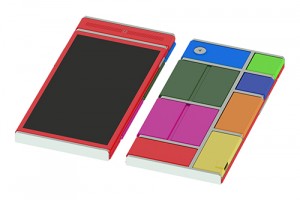 In a recent article from National Public Radio, the authors pose the question “If I told you there was a way to keep using your phone forever, would you want to?” Interestingly, the response was split: some would gladly keep their phone and others really do want to upgrade every year or two. The authors of the article focus on electronic modularity or in this case, cell phone modularity. This is the idea that a phone or other electronic device can be upgraded not by discarding the entire phone, but only the portion that is lacking. The upgrade may mean more memory, a better or additional battery, a higher resolution camera, or a new screen. Technically it is possible to build a modular smartphone now, but of course that would mean that the device manufacturer would have to accept a lower revenue stream. I think that the good folks at Samsung and Apple would be hard pressed to buy into that idea. Let’s explore current efforts with modularization and pose the same question: “If you could keep your phone forever, would you do it?”
In a recent article from National Public Radio, the authors pose the question “If I told you there was a way to keep using your phone forever, would you want to?” Interestingly, the response was split: some would gladly keep their phone and others really do want to upgrade every year or two. The authors of the article focus on electronic modularity or in this case, cell phone modularity. This is the idea that a phone or other electronic device can be upgraded not by discarding the entire phone, but only the portion that is lacking. The upgrade may mean more memory, a better or additional battery, a higher resolution camera, or a new screen. Technically it is possible to build a modular smartphone now, but of course that would mean that the device manufacturer would have to accept a lower revenue stream. I think that the good folks at Samsung and Apple would be hard pressed to buy into that idea. Let’s explore current efforts with modularization and pose the same question: “If you could keep your phone forever, would you do it?”
Phonebloks
Dave Haakens has started a web site called Phonebloks to promote the concept of modular phones. He is not building the actual phone itself but is hoping to inspire someone else to pick up the torch and run with it. He believes, and rightly so, that we are filling our landfills with e-waste such as discarded electronic devices that have become obsolete. Technically and physically they are still sound, but were tossed aside because someone wanted the newest model or an operating system upgrade left the old phone underpowered. A modular phone would eliminate both of these examples of e-waste. The only thing discarded, or hopefully recycled, would be the small module being replaced.
LG G5
LG has created a new phone with replaceable modules called LG Friends. Current modules include an enhanced camera and replacement batteries. LG promises to release more friends in the future. While this design does not provide for every module to be replaced, it is definitely a step in the right direction.
Puzzlephone, Fairphone, and Project ARA
A recent Tech Times article highlighted the difference between some of the platforms that are available or will hopefully be available soon. The Puzzlephone will be available in September and is split into three components, the display, the processor, and the battery, along with other electronics. You can replace only one of these components when they die or are underpowered. The Fairphone is available now and every component can be swapped out including the processor, the camera, the speaker, and the display. Project ARA from Google is currently only a concept but they hope to work with developers to create replaceable modules other than the traditional brains and the heart. Google has promised to release a prototype later this year.
The Plumbing Store
I look forward to the day when I can walk into the phone store and pick up a module, regardless of the phone provider, and it will work seamlessly with my phone. When I have a plumbing leak, I don’t replace all of the plumbing in my house but simply go to the hardware store and buy a replacement pipe the length, diameter, and material that I need. It doesn’t need to match the brand of plumbing that is in my home because the plumbing industry long ago agreed on standards. I look forward to that same ubiquity and modularity in the electronics industry.
Thoughts
What do you think of modular phones? Would you keep your current phone forever if you could replace just the individual components as they failed or became obsolete? Would the green factor of not having to replace your phone be a deciding factor? Personally, I like the capabilities and form factor of my current phone and I would hang on to it. Let me know your vote. In a future blog post I will focus on modular laptops and tablets.
Kelly Brown is an IT professional and assistant professor of practice for the UO Applied Information Management Master’s Degree Program. He writes about IT and business topics that keep him up at night.



Technically it is possible to build a modular smartphone now, but of course, that would mean that the device manufacturer would have to accept a lower revenue stream. I think that the good folks at Samsung and Apple would be hard pressed to buy into that idea.
It is possible to build a modular smartphone now, but of course, that would mean that the device manufacturer would have to accept a lower revenue stream. I think that the good folks at Samsung and Apple would be hard pressed to buy in.